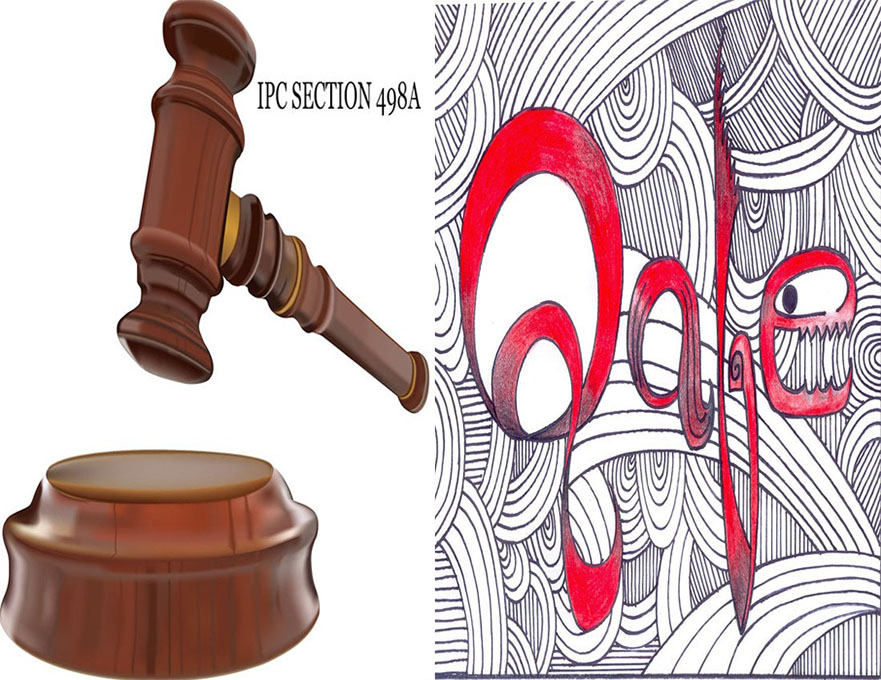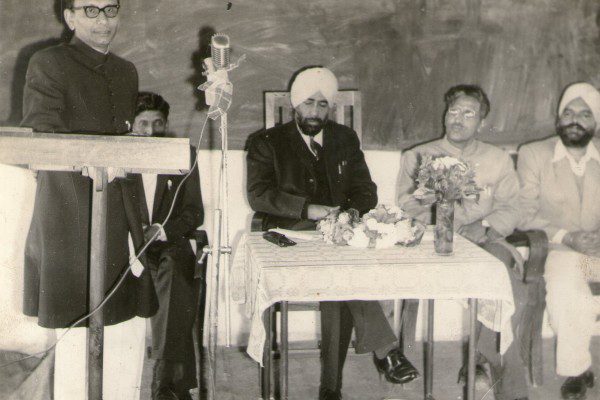The inefficient applicability of Section 498A has given rise to the well-orchestrated illusion that most of the cases filed under it are false. The Qafeteer interrogates a recent judgment of the Supreme Court and reveals the working fissures between the ‘recorded’ facts and the ground reality …
Section 498A was inserted in the Indian Penal Code (IPC) on 26 December, 1983, by the Criminal Law (second amendment) Act. A significant addition to the pre-existing Dowry Prohibition Act, 1961, Section 498A was the result of concerted efforts by women’s rights organisations and activists across the country in response to steadily rising dowry death figures. This is the only section in the IPC that recognises the existence of domestic violence perpetrated by husbands and in-laws as a crime, thereby making the State responsible to prevent and/or punish that.
The logic certainly seems inescapably simple: married women would continue to be battered and bruised, at times to the point of death, unless immediate recourse was available to them. Hence this section, whereby the accused husband and other members of the marital family are to be arrested immediately by the police on the registration of a complaint. A significant point of departure from the overall approach of Indian jurisprudence; presumption of innocence is replaced by presumption of guilt. Cannot be said to be too much of an aberration either, in a country where 99,135 cases were registered under Section 498A in 2011 – higher by 5.4% from 2007 (http://ncrb.nic.in/CD-CII2011/cii-2011/Chapter%205.pdf). In the early 1980s such dowry deaths became so commonplace – climbing up to even five a day in the national capital New Delhi – that the demand for intrusive preventive action by the State was more than justified.
Little more than a couple of decades later, on 2 July, 2014, the Supreme Court of India issued a judgment debarring immediate arrest under Section 498A, mentioning that the section was at times used as a “weapon rather than a shield by disgruntled wives” (page 3 of the verdict). What the judgment means in practical terms is that police personnel cannot arrest the accused without proper preliminary investigation; nor can magistrates routinely remand them in judicial custody. The verdict also mentions that failure to comply with the Court’s order would result in disciplinary action.
As may be expected, the verdict did receive some degree of media coverage, which included the views of some women’s rights activists and organisations, as also of those welcoming the verdict. However, though some assertions in the judgment are worth probing, such analytical pieces have not been readily perceivable in the limited coverage that the media accorded this judgment. Take for instance the assertion that “in quite a number of cases, bedridden grand-fathers and grand-mothers of the husbands, their sisters living abroad for decades are arrested” – which is made without quoting any specific numbers. Interestingly enough, the numbers quoted are those of arrests and charge-sheets made under Section 498A in 2012, and the rate of conviction in contrast: as high as 93.6% of charge-sheets issued, of which only 15% resulted in conviction. This, for the Supreme Court, appears to be hard enough evidence to highlight the misuse of the section by so-called discontented wives.
It would be more than relevant in this context to refer to the National Crime Record Bureau (NCRB) statistics of 7,714 convictions against 13,339 acquittals in murder cases in 2012: just over 36% convictions against slightly over 63% acquittals. A total of 186,986 cases of murder were brought to trial in 2012, which included cases pending from the previous year, of which only 21,053 cases could be tried within the year. Probing a little further into the state level statistical scenario reveals an even more dismal picture. If only big states with significant population are taken into account, in the states of Andhra Pradesh, Gujarat, Odisha, Jammu and Kashmir, Maharashtra and West Bengal, conviction rate for murder hovers in the range of 19-27% (Source: NCRB Records). The same Apex Court had, in this context, issued a completely different order on 7 January, 2014, directing the state governments to formulate a procedure to take disciplinary action against investigating or prosecuting officials, lapses on whose part might have lead to the acquittals.
This is where the queerness of the situation strikes the Qafeteer, who fails to pinpoint that X factor which makes poor convictions in the case of Section 498A a pointer to its misuse, while the same poverty with reference to murder convictions is considered an indicator of the law enforcing agency (i.e. the police) failing in its duty. The only difference that is immediately evident is that Section 498A is relevant specifically for women, while murders encompass the entire population of the country, at times extending to foreign nationals who are present in the country at a given point of time.
Going by this prima facie difference, as the Supreme Court has done with reference to both the verdicts – relying primarily on the ratio between charge-sheets and convictions/acquittals – one would be forced to read a bias against women-specific laws/provisions among the learned Supreme Court judges. It is contextual here to mention that the judgment related to Section 498A stresses how women, too, are harassed by the so-called indiscriminate application of this provision: “Nearly a quarter of those arrested under this provision in 2012 were women i.e. 47,951 which depicts that mothers and sisters of the husbands were liberally included in their arrest net” (page 4 of the judgment). So, the hon’ble judges cannot be accused of being blind to the cause of women. However, that does not quite solve the riddle.
Let us examine a few facts at this point. Firstly, the conviction rate in many serious crimes is quite low, as clearly depicted with reference to murder cases. In fact, the rate of conviction in crimes committed under the IPC has dropped from 62.7% in 1972 to a mere 38.5% in 2012 (Source: NCRB Records). So, it is logically justifiable to wonder why the rate of low convictions only for one provision makes the misuse issue stand out so prominently that the Apex Court gets concerned about it, while in another the competence and integrity of the police are questioned, and a vast majority of other offences do not ruffle anyone’s feathers, so to say.
Secondly, there are streams within feminist discourses that fully recognise that the reinforcement of patriarchy is not carried out by biological males alone; biological women participate wholeheartedly as well. To cite a rather common example, it is the mother more than anyone else who teaches her son to play with toy guns and her daughter to play with dolls and toy kitchenware; sends her son out to get the grocery and asks her daughter to help her in house chores. In fact, one of the strengths of patriarchy is that it not only puts women in a cage, but has a wide range of socialisation processes that indoctrinate women to feel themselves to be weak and dependent and so on. That being the situation, it does not stand to reason to discard offhand the involvement of mothers-in-law and sisters-in-law in the torture of the bride. Moreover, if the Court was concerned about the application of a women-oriented law for the harassment of other women, why was the judgment not to that effect? Why arrest per se was ruled out, rather than just the arrest of the women among the accused?
Over a period of time, many groups have mushroomed across the country to defend the rights of husbands and their families against Section 498A, which continue to rave and rant in every single forum available to them – real and virtual – against the misuse of this section. Probably because these are groups of, by and for men, who under the prevalent socio-economic norms have far greater control on resources – their voices can be heard much more loudly than those of women who continue to be battered and bruised helplessly because police officials would often refuse to register their complaints; or would not arrest the accused under the pretext that they were all absconding, even when specifically informed about the presence of the accused . . . Common experiences of activists who work in the sphere of violence against women. In fact, this Qafeteer is reminded of a situation where she was involved in a rapid assessment of the ground situation of crimes against women in three districts of the state of West Bengal, India. With the exception of one Officer-in-Charge, all the other eight had started their conversation on this issue with the assertion that 70% of the registered cases were false. It is for everyone to guess how effective the investigations would be when police officials nurture this mindset, though the Apex Court, it seems, is entirely unaware of this ground level reality.
National Crime Records Bureau data reflect that conviction for rape stands at 24.2% and at 28.6% for robbery. Maybe in near future, we will hear the Apex Court pull up the police force for lapses in anti-robbery investigations, while asking for the toning down of rape laws on the assumption that low conviction rate signifies false complaints, just as with regard to Section 498A. Do we celebrate that possibility, or mourn it? That, for sure, will be determined by which side we are on.














